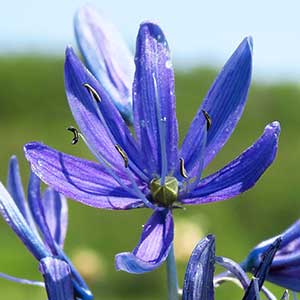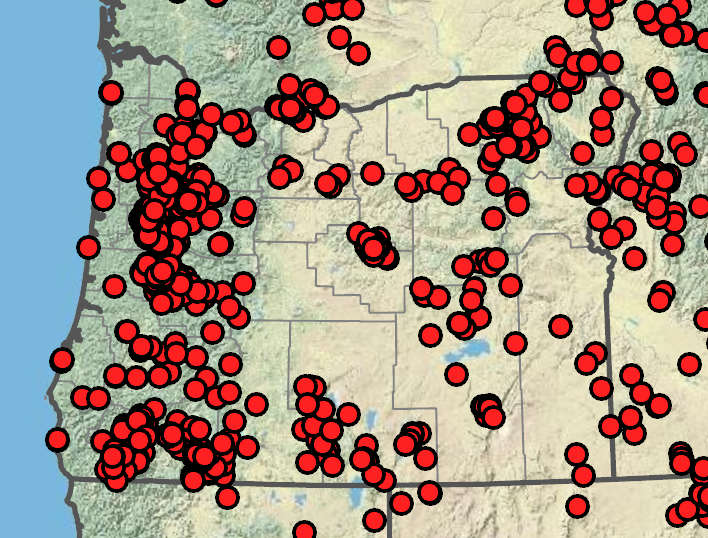Camassia quamash
Camassia angusta
common camas
3–5, lanceolate to linear, 25–70 cm × 5–15 mm.
nodes 3–45, with 2–5 or more flowers open at once, sterile bracts 0–2; most longer than pedicels, tan to blue;
pedicel-stem angle broad or less often narrow.
corollas bilateral, rarely radial;
tepals 10–35 × 3–5 mm, pale blue to deep blue-violet, initially withering individually or connivently but separating in fruit and persisting on stem;
veins 3–9.
oriented away from or appressed to stem; ovoid-oblong, 15–25 mm.
5–10 per locule.
Camassia quamash
Camassia angusta
Western North America. 8 subspecies; 6 subspecies treated in Flora.
Camassia quamash includes a confusing array of morphologically and geographically diverse subspecies. Differentiating them remains challenging, yet genetic data have revealed a detectable molecular signature between groups that grow “east” (breviflora, quamash, utahensis) and “west” of the Cascades (intermedia, maxima, walpolei). Taxa within these groups are still unresolved (Fishbein et al. 2010).
Susan Kephart



